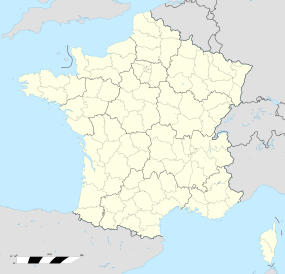Glanum

Excavations of ancient Glanum, at the foot of Mont Gaussier. The church spire of modern Saint-Rémy-de-Provence can be seen in the middle distance to the left.
|
|
| Alternate name | Γλανόν |
|---|---|
| Location | Near Saint-Rémy-de-Provence, France |
| Coordinates | 43°46′26″N 4°49′57″E / 43.77389°N 4.83250°ECoordinates: 43°46′26″N 4°49′57″E / 43.77389°N 4.83250°E |
| Type | Settlement |
| History | |
| Builder | Salyens |
| Founded | 6th century BCE |
| Abandoned | 260 AD |
| Periods | Celto-Ligurian, Roman |
| Site notes | |
| Excavation dates | 1921, 1982 |
| Archaeologists | Jules Foremigé, Pierre LeBrun, Henri Roland |
| Condition | In ruins |
Glanum (Hellenistic Γλανόν, as well as Glano, Calum, Clano, Clanum, Glanu, Glano) was an oppidum, or fortified town in present day Provence, founded by a Celto-Ligurian people called the Salyes in the 6th century BCE. It became officially a Roman city in 27 BCE and was abandoned in 260 AD. It is located on the flanks of the Alpilles, a range of mountains in the Bouches-du-Rhône département, about 20 km (12 mi) south of the modern city of Avignon, and a kilometre south of Saint-Rémy-de-Provence. It is particularly known for two well-preserved Roman monuments of the 1st century B.C., known as les Antiques, a mausoleum and a triumphal arch (the oldest in France).
Between the 4th and 2nd centuries BC, the Salyens, the largest of the Celto-Ligurian tribes in Provence, built a rampart of stones on the peaks that surrounded the valley of Notre_Dame-de-Laval, and constructed an oppidum, or fortified town, around the spring in the valley, which was known for its healing powers. A shrine was built at the spring to Glanis, a Celtic god. The town grew, and a second wall was built in the 2nd century BC.
The town had a strong Celtic identity, shown by the names of the residents (Vrittakos, Eporix, Litumaros); by the names of the local gods (Glanis and his companions, the Glanicae, (similar to the Roman Matres); and the goddesses Rosmerta and Epona); by the statues and pottery; by the customs, such as displaying the severed heads of enemies at the city gate; and by the cooking utensils found in the ruins, which showed that the people of Glanis boiled their food in pots, rather than frying it in pans like other Mediterranean tribes.
...
Wikipedia

